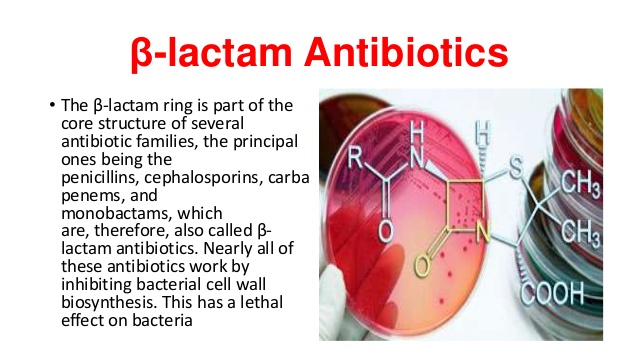
Beta-lactam antibiotics: Penicillin, Cephalosporin, Monobactam, Carbapenems and Clavulanic acid
- β-lactam antibiotics have common b-lactam ring in their structure. Different b lactam antibiotics differ in their side chain.
There are several types of B-lactam antibiotics which are potentially important.
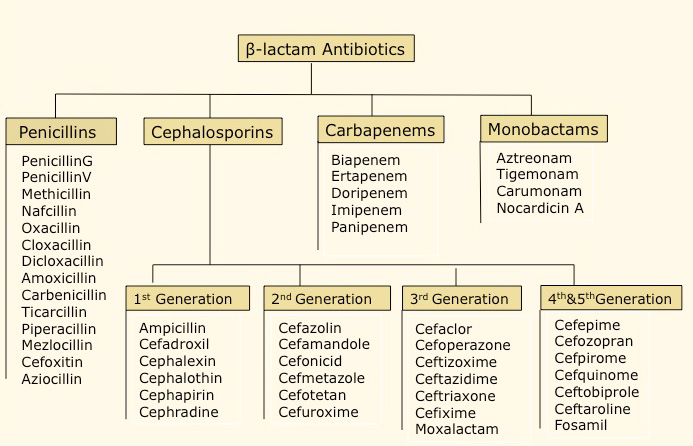
Some of them are:
- Penicillin- penicillin G, methicillin, amphicillin, amoxicillin, carbenicillin, piperacillin, penicillin V
- Cephalosporin
- Monobactam
- Carbapenems
- Clavamas-clavulanic acid
1. Penicillin
2. Cephalosporin
3. Monobactams:
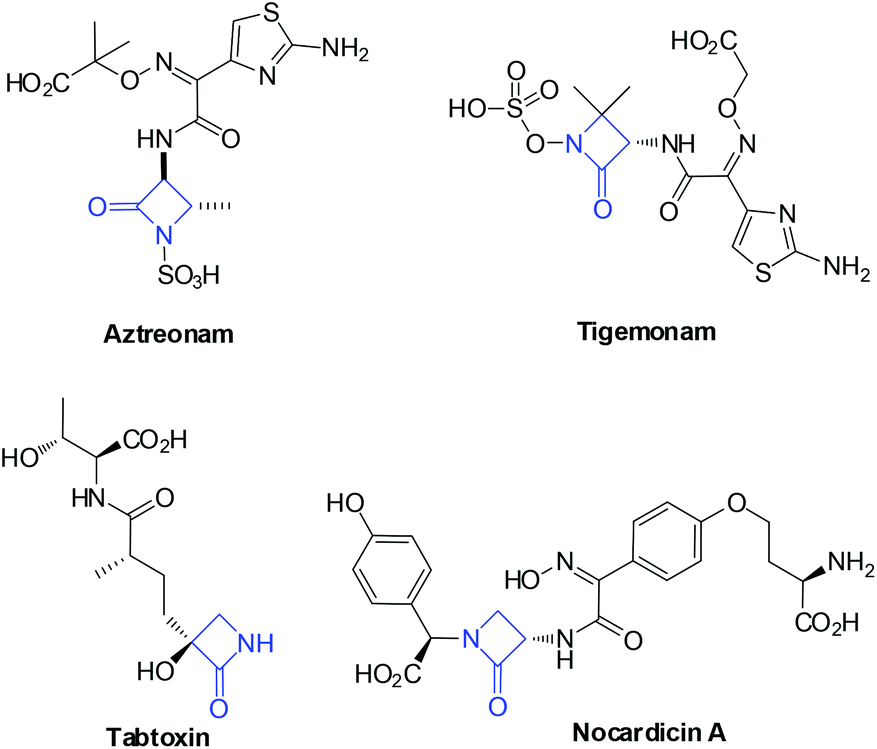
- The most common example of monobactam is Aztreonam. Monobactam are active against β-lactamase producing Gram –ve Enteric bacteria, Pseudomonas and Serratia. They have extended gram –ve coverage than penicillin. However they are inactive gram +ve bacteria and anaerobes.
- Individuals who are allergic to penicillin are usually not allergic to monobactams
- Monobactams binds to Penicillin binding protein (PBP) and inhibits transpeptidase activity causing filamentation of bacteria which dies later.
list of monobactam antibiotics
- Azteronam
- Tigemonam
- carumonam
- Nocardicin A
4. Carbapenems:
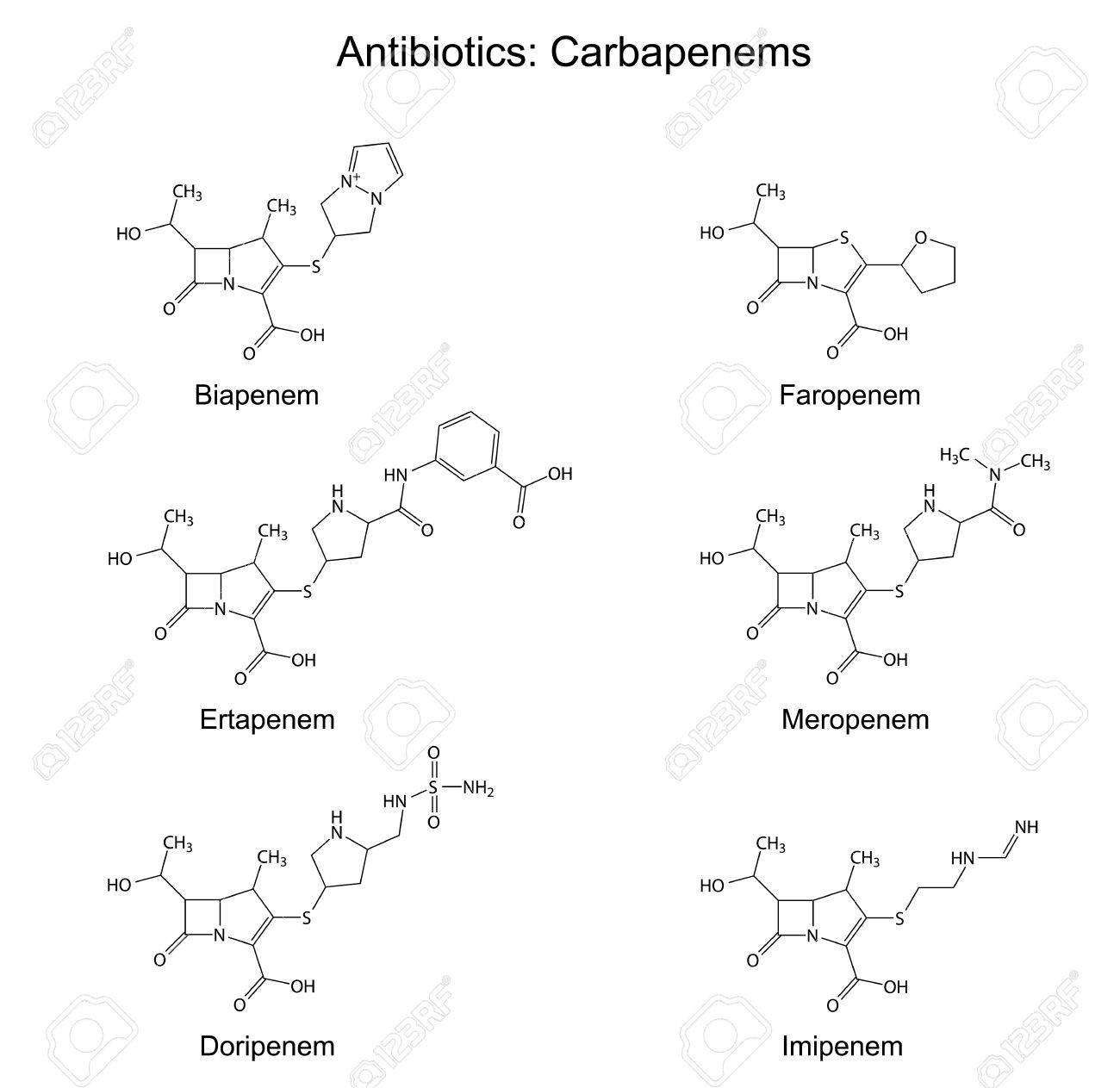
- Carbapenems are broad spectrum drug, virtually active against every bacteria. They are active against Gram +ve and Gram –ve bacteria including Pseudomonas, Serratia, indole positive Proteus and Bacteroid fragellis. Carbapenems are resistant to hydrolysis by β-lactamases.
Example ofcarbapenems:
- Thienamycin
- Imipenem
- Mezopenem
- Ertapenem
- Imipenem can be hydrolysed by dihydropeptidase found in renal tubules in Human, so imipenem should be administered along with dihydropeptidase inhibitors (Cilastatin).
- Meropenem and ertapenem are resiatant to hydrolyse by dihydroxypeptidase.
- Individuals allergic to penicillin should not be recommended Carbapenem drugs.
- Bacteria producing metallo-β-lactamase such as Stenotrophomonas metophila and Bacteroids fragillis are resistant to carbapenems.
5. Clavulanic acid:
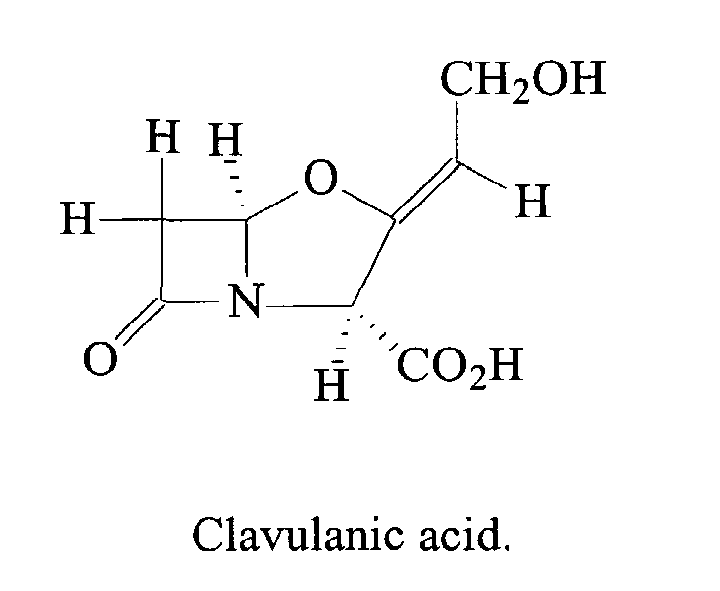
- Clavulanic acid is a β-lactamase inhibitors. The resistant strain of bacteria producing βlactamase enzyme hydrolyse β-lactam antibiotics and become resistant.
- β-lactamase inhibitors have special property of inhibiting activity of β-lactamase. They are also β-lactam group of antibiotics with very litte antimicrobial activity.
- The β-lactamase inhibitors are used in combination with β-lactam antibiotics.
